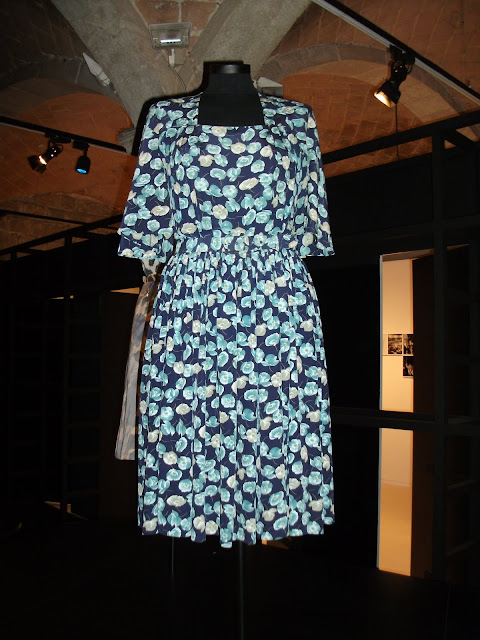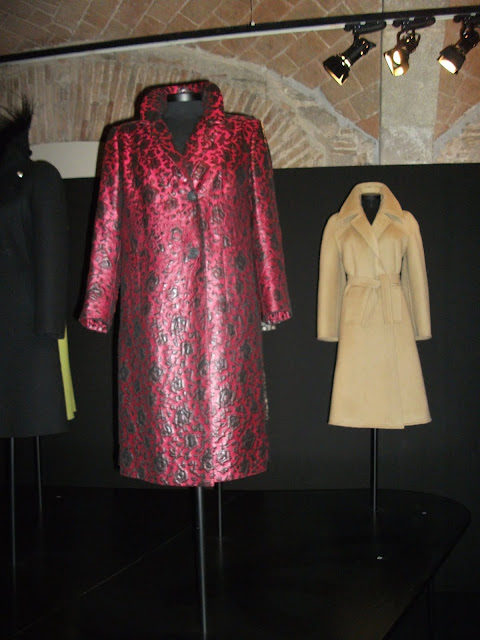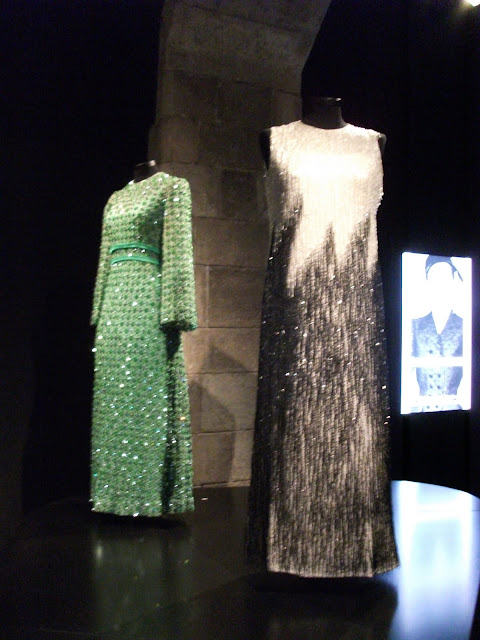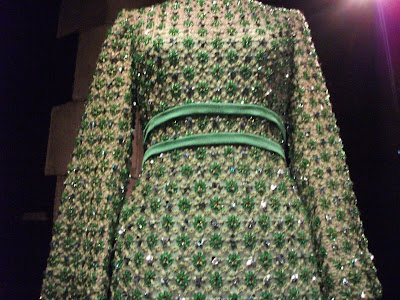‘The wardrobe we build op over time shapes our own biography as the garments we choose to keep and we no longer use represent moments , memories and emotions which we do not want to eliminate and want to continue forming part of our life’
Will i attract attention? Will I meet expectations? What will they think of me? Does it suit me? Will they like me? Am I what I look like? How will others see me? What shall I wear? Will I go unnoticed? Am I me? Will I surpass expectations? What image do I project?
Just like in Rome another beautiful coincidence of me being in the right place at the right time came my way. Barcelona just hosted at the Museu Textil i d’Indumentaria an exhibition in which people can admire the wardrobe of Maria Brillas – all pieces signed by Pedro Rodriquez.
The exhibition is called What to wear? and it shows exactly the decision Maria Brillas had to face before every event she was attending or every place she had to go. It reflects on the way that the wardrobe s part of us as an individual and also reflects our personality. The clothes we decide to wear mark exactly the way we want to be perceived by others or the statement we want to make.
Not only was I able to see the great choices Maria Brillas made in choosing her clothes but I also learned more about Pedro Rodriquez of which I haven’t heard until this expo. He was a master of the Spanish couture between 1919 and 1980’s in Barcelona, Madrid and San Sebastian.
‘Everyday we must face alone an essential and ordinary decision about what to wear, how to dress, what specific selection of clothes we make from our more or less extensive wardrobe. The complexity intrinsic to the fact of dressing is greater than it first seems as it involves a profound emotional and intellectual reflection which helps us to decide how we want to look to others; that is , to construct not only our public image but also our own identity’
- these were the words written on the wall before the exhibition began.
There were also alot of schemes drawn before every group of dresses (day dresses, evening, cocktail dresses etc.) to show you in which part of the day would Maria Brillas wear this. For instance from 9 till 12 in the morning she would sit in her ‘office’ as she called it (that was her dressing room) and she organized the day . From 12 till 3 in the afternoon she would go take care of some errands in town and visit Pedro Rodriquez. From 6 till 9 in the evening she would go to the Opera and between 9 and midnight she would go for dinner , attend events and dance.
Because as we find out in this exhibition the wardrobe is an extension of our personality and the clothes we wear play a very important role in the construction of our identity it is easily comprehended that Maria Brillas was a very strong individual in the social life of Barcelona. She chose her wardrobe to meet the expectations surrounding her in a determined social, political and cultural context. She was married to the distinguished businessman from Girona – Joaquim Ensesa and this brought alot of pressure with itself. Brillas had to always be on top of things and represent her family and status the best way she knew how.Between Maria Brillas and Pedro Rodriquez was a very strong, faithful and close relationship. So he was not only her favourite designer but also her friend.
By exploring this wonderful exhibition I was a witness of some beautiful examples of the 20th century couture and also what Maria was going through every moment of every day. How hard it was for a woman in a specific social position to maintain all the appearances and how greatly she was conditioned when making her sartorial choices.
The four main sections which I curiously explored were marked as : Day , Evening, Cocktail and Ceremony Clothing. Around these four criteria was the life and wardrobe of Maria Brillas organized and put together.
DAY - Light dresses
- light and often patterned dresses were much in vogue from the mid 30's to the late 50's
- comfort and freedom of movement
- relaxed ocassions , far from the social pressure (walk in the countryside or summer outings)
DAY - Knitted Wool Dresses with impeccable cut
-everyday occasions that required more formality
-afternoon visits to relatuves , friends or commitments
-halfway between the dress and the tailored suit
DAY - Suits and tailored ensembles
- task related to work or daily activities with a certain formality
- perfect work uniform - sober colours
DAY - coats
- comfort, good cut and quality of fabrics
- appliquthat add great aestethic strength to the garment- deep grean coat in plain wool and black coat with a monkey fur collar , camel-coloured on was worn more often
COCKTAIL Dresses
- marked preference in black for cocktail dresses
- these were worn at parties in Madrid and Barcelona in the 1950's and 1960's
- discret host
CEREMONY Dresses
EVENING - Black Dresses
EVENING - Sheer Dresses
EVENING - Tunic Dresses
EVENING - Jewel-like beadwork
EVENING - Majestic Dresses


















 a
a











































No comments:
Post a Comment